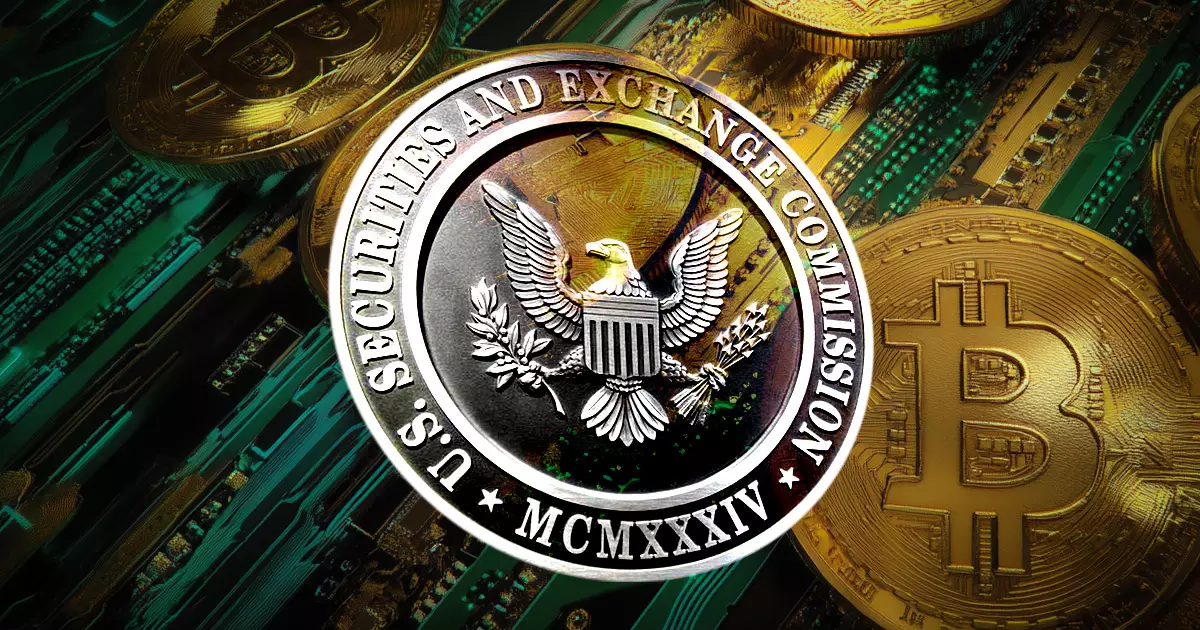In an era where crypto markets are rapidly evolving, the U.S. Securities and Exchange Commission (SEC) finds itself in a precarious position. By engaging with heavyweight financial institutions like BlackRock and innovative alliances like the Proof of Stake Alliance, the SEC is portraying a willingness to discuss the regulatory landscapes surrounding crypto exchange-traded products (ETPs). However, this effort raises pressing questions about whether the government’s approach to regulation fosters or stifles innovation.
BlackRock: A Major Player in the Arena
BlackRock, a titan in the financial sector, is undeniably a game-changer when it comes to pushing boundaries. In discussions held on April 1, the firm presented its insights on the in-kind redemption process for crypto ETPs in the U.S. This presentation revealed a meticulously structured workflow that outlines how market participants can facilitate liquidity. On one hand, this could serve as a catalyst for the integration of crypto into traditional finance, broadening accessibility and attracting a more mainstream audience. On the other hand, it also underscores a pressing concern: will regulatory guidelines imposed by entities like the SEC create barriers that benefit only institutional investors at the expense of retail participants?
The Proof of Stake Alliance: A New Frontier
The discussions with the Crypto Council for Innovation’s Proof of Stake Alliance highlighted an exciting aspect of the crypto ecosystem: staking. The model for earning rewards by validating transactions can enhance the value proposition for ETPs, particularly in proof-of-stake networks such as Ethereum and Solana. However, the reality is that these discussions reveal a looming tension between innovation and regulation. While the coalition is pushing for an inclusive regulatory framework that accommodates diverse staking models, the SEC’s cautious approach may kill the dynamism that drives innovation in the crypto landscape. Shouldn’t the priority be to empower users rather than constrict the very processes that underpin blockchain technology?
The Dual Nature of Regulatory Engagement
The SEC’s engagement with BlackRock and the Proof of Stake Alliance is a double-edged sword. While it represents a meaningful step toward regulatory clarity, it also illustrates the potential downside of institutional gatekeeping. The deliberations over options like the “Services Model,” which allows third-party validators to partially stake, and the “Liquid Staking Token Model,” holding liquid staking tokens, are both commendable paths forward. Yet, there is concern that these models may serve the interests of larger financial bodies to the detriment of individual investors. In focusing on frameworks that suit institutional entities, are we jeopardizing the very essence of what crypto aims to achieve—decentralization and democratization of finance?
Investor Returns vs. Regulatory Red Tape
The ramifications of excluding staking from crypto ETPs are profound. Proponents like Jito Labs and Multicoin Capital make compelling arguments: removing the staking component could diminish investor returns and compromise the functional utility of assets built on proof-of-stake mechanisms. It’s a classic case of regulatory overreach, where the SEC, in its quest to protect retail investors, risks creating a financial product that offers less than what the underlying assets can provide. If the SEC continues down this path, it may inadvertently curtail investment opportunities and foster disillusionment among the very constituencies it seeks to protect.
Setting a Precedent: The Future of Crypto Regulation
The SEC’s ongoing review, based on these recent dialogues, signifies that we are standing at a crossroads. The question remains whether the regulatory outcomes will pave the way for a harmonious relationship between innovation and investor protection or create an environment akin to the friction seen prior to the internet boom. If history is any guide, state control often lags behind the rapid evolution of technology, and the SEC appears to be caught in a legislative time warp, torn between its protective duties and the imperative to adapt to an irreversibly changed financial landscape.
Rather than being the forward-looking, adaptive body that the crypto community needs, the SEC risks becoming a hallmark of stagnation. As discussions continue around the fine line each party must walk, it’s essential to question: Are we forging a path that balances safety with innovation, or are we settling for a status quo that might end up stifling the potential of blockchain technology?














Leave a Reply